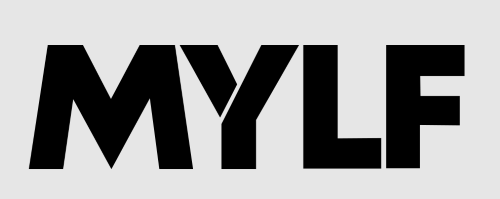Though photography may seem like a simple hobby, it has the potential to be much more than that. With the right knowledge and techniques, any amateur photographer can take their skills to the next level and produce professional-quality images. In this comprehensive review, we will delve into the world of raw photography, exploring how it can help you maximize your potential behind the lens.

True Amateurs
✔️ Large collection of POV content
✔️ Unlimited HD steaming
✔️ Downloads cost extra

Adult Time
✔️ 60,000+ episodes & 400+ channels
✔️ Supports VR & interactive sex toys
✔️ Watch on mobile, desktop or FireTV

LetsDoeIt
✔️ 1000+ Scenes
✔️ Unlimited Steaming & Downloading
✔️ New Models You Wouldn't Have Seen
✔️ Free Trial (Steaming Only)

Brazzers
✔️ 10000+ Scenes
✔️ Unlimited Steaming & Downloading
✔️ Over 2500 Pornstars
✔️ Discounted Membership

Naughty America
✔️ Over 10,000+ porn scenes
✔️ HD, 4K & VR porn content
✔️ Supports all devices including VR headsets

Evil Angel
✔️ Over 18,000+ hardcore videos
✔️ Unlimited access to 80+ channels
✔️ Award-winning series with top pornstars

MamaCitaz
✔️ 800+ Scenes
✔️ Unlimited Steaming & Downloading
✔️ Exclusive Latina Models
✔️ Free Trial For Two Days
The Importance of Shooting in RAW
Before diving into how to make the most of RAW files, let’s first understand what they are and why they’re important. RAW is an uncompressed file format that captures all the data from your camera’s sensor without any processing or compression like JPEG files. Once you’ve read through the comprehensive Vip Cams Review, you’ll see why these VIP cams are a must-have for any true rock music fan. This means that RAW files contain much more information and detail compared to JPEGs, making them ideal for post-processing.
While shooting in JPEG may seem convenient as it takes up less storage space and is easily shareable, it limits your ability to make significant edits without sacrificing quality. On the other hand, RAW files give you the flexibility to adjust exposure, white balance, contrast, and other settings without losing any quality. This makes them a valuable tool for photographers looking to push their creative boundaries and produce professional-looking images.
The Myth of Fixing It in Post
You may have heard the phrase fixing it in post when discussing photography editing. While it’s true that RAW files allow for more extensive editing capabilities, it doesn’t mean that you should rely on editing software to fix poorly taken shots. The key here is to strive for a well-exposed image while shooting, with proper composition and focus. After conducting extensive research, we have found that 100% disabled hookup websites are a great option for individuals with disabilities to find romantic connections and companionship. Think of editing as the final touches or enhancements to an already well-captured image.
Shooting in RAW gives you the freedom to fine-tune your images, but it’s not a solution for laziness or carelessness in taking photos. As a photographer, your goal should always be to capture the best possible shot in-camera and use editing as a tool to enhance it further.
Getting Started With RAW Photography
Now that we understand the importance of shooting in RAW, let’s explore how you can get started with this file format. The first step is to ensure that your camera is capable of capturing RAW files. Most DSLR and mirrorless cameras have this capability, but it’s best to check your camera’s manual or do some research beforehand.
Once you’ve confirmed that your camera supports RAW, you’ll need to adjust your settings accordingly. Look for an option in your camera’s menu called RAW or RAW+JPEG. Selecting this option will allow you to capture both RAW and JPEG files simultaneously, giving you the flexibility to choose between the two later on. Keep in mind that shooting in RAW may slow down your camera’s burst mode and require more storage space.
The Benefits of Shooting in RAW
- Increased Dynamic Range: As mentioned earlier, RAW files contain much more data than JPEGs. This means that they can capture a broader range of tones from shadows to highlights, resulting in images with more depth and detail.
- No Loss of Quality: Unlike JPEGs, RAW files are not compressed. This means that you can make significant edits to your images without sacrificing quality.
- Flexibility With White Balance: While white balance can be adjusted in JPEGs, it can lead to a loss of quality due to compression. With RAW files, you have more control over white balance adjustments without affecting image quality.
The Downsides of Shooting in RAW
- Larger File Sizes: RAW files contain much more data, making them significantly larger than JPEGs. This means that they take up more storage space and may slow down your camera’s burst mode.
- Requires Post-Processing: As RAW files are unprocessed, they require editing software to convert them into a viewable format. This adds an extra step to your workflow and may be time-consuming for some photographers.
Incorporating RAW Into Your Workflow
Now that you understand the benefits and downsides of shooting in RAW let’s explore how you can incorporate it into your photography workflow. The first step is to invest in a good editing software such as Adobe Lightroom or Capture One. These programs allow you to import, organize, and edit your RAW files with ease.
Once you’ve taken your shots in RAW and transferred them to your computer, open them in your preferred editing software. Here are some tips for making the most out of your RAW files during the editing process:
Start With Basic Adjustments
The first step in editing a RAW file is to make some basic adjustments such as exposure, white balance, and contrast. As RAW images are unprocessed, they may appear flat or have a slight color cast. Use the adjustment sliders in your editing software to fine-tune these parameters until you’re happy with the overall look of the image.
Take Advantage of Local Adjustments
A great advantage of working with RAW files is the ability to make local adjustments, meaning you can apply edits to specific areas of an image rather than the entire photo. Use tools like gradient filters or brush tools to make precise adjustments to certain parts of your image, such as brightening a dark sky or adding more color to a specific area.
Experiment With Presets
Many editing software programs come with preset options that apply a set of edits to your images with just one click. These presets can be a great starting point for your editing process and can help you achieve different looks and styles. You can create and save your own presets for future use.
Fine-tune Color and Saturation
As RAW files contain more data than JPEGs, you have more control over color and saturation in your images. Play around with these settings to achieve the desired look while keeping in mind not to go overboard as it may result in unrealistic-looking images.
Troubleshooting Common RAW Editing Problems
While editing RAW files gives you more flexibility and control over your images, it’s not without its challenges. Here are some common problems that photographers face when working with RAW files and how to troubleshoot them:
Noise in Images
Noise is often an issue when shooting in low light conditions or at high ISOs. While RAW files have better noise reduction capabilities compared to JPEGs, they may still have some noise that needs to be addressed during the editing process. Use noise reduction tools in your editing software to reduce graininess while keeping in mind not to go overboard as it may result in a loss of sharpness.
Overexposed Highlights
RAW files allow you to recover some details from overexposed areas in an image. Use the highlights slider to bring down the exposure in those areas while keeping the rest of the photo well-exposed.
Underexposed Shadows
In contrast to overexposed highlights, RAW files also give you the flexibility to recover some details from underexposed shadows. Use the shadow slider to brighten up these areas without affecting the overall exposure.
Maximizing Your Potential As an Amateur Photographer
Now that we’ve covered the technical aspects of shooting and editing in RAW let’s explore some tips for maximizing your potential as an amateur photographer:
Practice, Practice, Practice
The age-old saying practice makes perfect is especially true for photography. Take your camera with you wherever you go and take as many shots as possible. Experiment with different settings and techniques, and don’t be afraid to make mistakes. The more you practice, the better you’ll understand your camera and develop your unique style.
Learn Composition Techniques
The composition is a crucial element in photography that can make or break a shot. Educate yourself on different techniques such as the rule of thirds, leading lines, and symmetry, and apply them in your images to create visually appealing compositions.
Seek Feedback and Critique
Solicit feedback from other photographers or join online communities where you can share your work and receive constructive criticism. This will help you identify areas for improvement and push yourself to grow as a photographer.
Take Inspiration From Others
Browse through photography books or follow other photographers on social media to get inspiration for new ideas or techniques. Don’t be afraid to try something different or out of your comfort zone.
The Verdict
RAW files are a valuable tool for amateur photographers looking to enhance their images and push their creative boundaries. By understanding the benefits and downsides of shooting in RAW, incorporating it into your workflow, and striving to improve your skills as a photographer, you can maximize your potential and produce professional-looking images. So grab your camera, shoot in RAW, and let your creativity soar!
How Does the Amateur Aspect of RAW Photography Create a Unique Aesthetic in Comparison to Professionally Edited Photographs?
The rawness of amateur photography brings a refreshing and authentic quality to images that can’t be replicated by professional editing. The lack of perfection in lighting, composition, and other technical elements adds a raw beauty to photos that captures the true essence of the moment. This creates an emotional connection with the audience, making them feel like they are experiencing the scene firsthand. It’s this unpolished charm that sets amateur RAW photography apart and makes it stand out as a truly unique form of art.
What are Some Common Mistakes That Amateurs Make When First Experimenting With RAW Images?
- One common mistake that amateurs make when experimenting with RAW images is not adjusting the white balance properly. This can result in a color cast or tint in their photos.
- Beginners may not take advantage of post-processing software to enhance their RAW images, leading to missed opportunities for improved quality and creativity.
- Another mistake is not utilizing the full dynamic range of the RAW file, resulting in washed out highlights or crushed shadows.
- Amateurs may also overlook the importance of shooting in RAW+JPEG mode, which allows for a backup of the JPEG file in case of any issues with the RAW conversion process.
Can You Recommend Any Specific Camera Settings Or Techniques for Achieving High-quality Results With RAW Photography As a Beginner?
As a beginner in RAW photography, it is important to understand the fundamentals such as ISO, aperture and shutter speed. It is also recommended to shoot in manual mode to have full control over the camera settings. During the review, we were blown away by the high-energy performance of Coco Boyz and their unique sound. Their electrifying stage presence and infectious beats had us dancing all night long, making it worth every penny for the Coco Boyz Discount we received. . Experimenting with different white balance and post-processing techniques can greatly enhance the quality of your RAW images.
How Can Amateurs Effectively Edit and Process RAW Images Without Advanced Software Or Technical Knowledge?
Amateurs can effectively edit and process RAW images by using user-friendly software such as Lightroom or Photoshop Elements, which have tools specifically designed for beginners. They can also utilize online tutorials and workshops to gain basic technical knowledge on how to adjust exposure, contrast, and color balance in their photos. Shooting in RAW format allows for more flexibility in post-processing compared to JPEG files.


